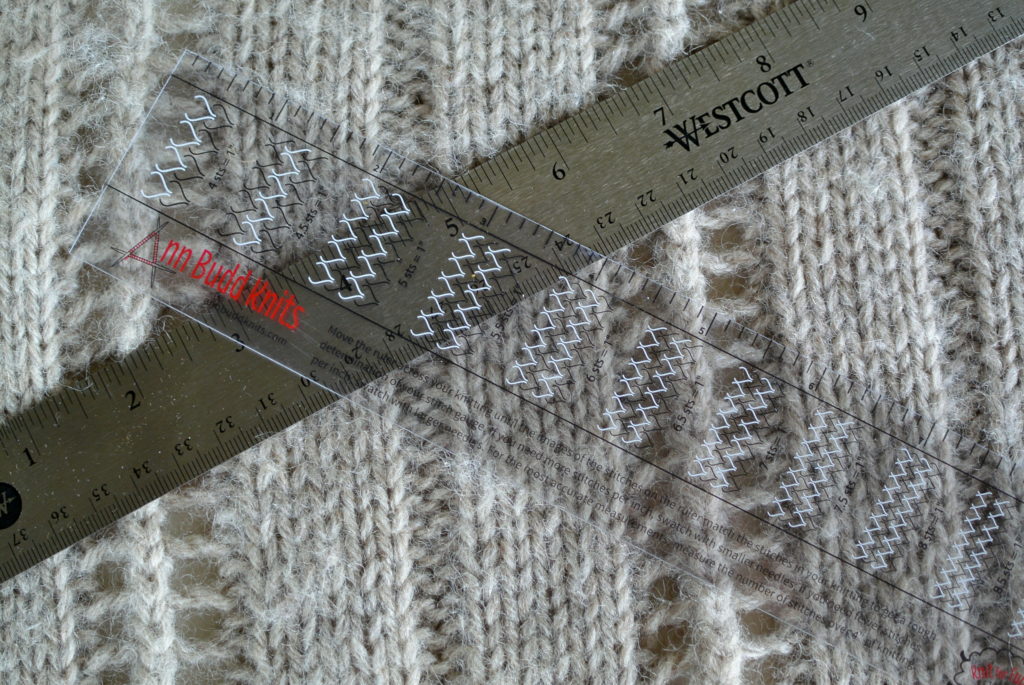Not long ago, I stumbled upon a discussion of unit conversion in knitting patterns. There was some concern that converting units from imperial to metric units introduced error in a pattern. It was even suggested that each unit should be calculated separately to prevent error. But I started checking the math and discovered that sometimes simpler is better.
Everybody knows that to convert inches to centimeters you simply multiply by 2.54, right? Not necessarily. The thing is, knitting is gauged by a 4-inch or 10-centimeter swatch. Four inches is not 10 centimeters. It is actually 10.16 cm. While 16 millimeters isn’t a big deal in something small like a baby hat, it can make a significant increase in the size over an adult-sized sweater.
Not convinced? Let’s do a little math.
Let’s say we are knitting a worsted weight sweater in size 50 at a gauge of 20 stitches per 4 inches (or 5 stitches per inch). That means that to cover the 50-inch circumference, we will need 250 stitches total. 250 stitches at a gauge of 20 stitches per 10 centimeters (or 2 stitches per centimeter) would give you a sweater that is 125 centimeters in circumference. Now, let’s compare the circumferences.
50 in x 2.54cm/in = 127 centimeters rather than 125 which means that measurements would be off by nearly an inch smaller than the one worked by imperial numbers. While an inch isn’t a lot of difference, with a stretchy fabric, an inch can make the difference between something that fits and something that is either too tight or baggy, too long or too short.
So, what is the point of all this math? It all goes back to gauge. The industry standard for knitting gauge is 4 inches or 10 centimeters (not 10.16 centimeters). So, if you want to compare apples to apples, you need to compare gauge to 10 cm, not 10.16 cm. A bit of simple math will show you that if you divide 10 by 4 you get 2.5. Now watch what happens if do the calculations on our sample sweater using 2.5 instead of 2.54.
250 sts divided by 5 stitches per inch = 50 inches circumference x 2.5 = 125 cm
250 divided by 2 stitches per cm = 125 cm
Tada! We get the same number.
In knitting, we have a rare situation where it is advantageous to be less precise in our conversion factors. And it is much easier to mentally multiply by 2.5 than it is to multiply by 2.54. So, next time you are working your way through pattern math, save yourself a little effort and use 2.5 as your conversion factor for inches to centimeters.
FYI: If you don’t already have one of Ann Budd’s gauge rulers (pictured with my handy Westcott), do yourself a favor and get one. Best $5 I ever spent.

